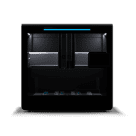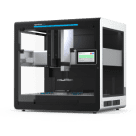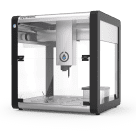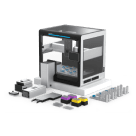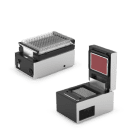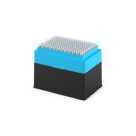Welcome¶
- Welcome
- Tutorial
- Versioning
- Major and Minor Versions
- Specifying Versions
- Maximum Supported Versions
- API and Robot Software Versions
- Changes in API Versions
- Version 2.27
- Version 2.26
- Version 2.25
- Version 2.24
- Version 2.23
- Version 2.22
- Version 2.21
- Version 2.20
- Version 2.19
- Version 2.18
- Version 2.17
- Version 2.16
- Version 2.15
- Version 2.14
- Version 2.13
- Version 2.12
- Version 2.11
- Version 2.10
- Version 2.9
- Version 2.8
- Version 2.7
- Version 2.6
- Version 2.5
- Version 2.4
- Version 2.3
- Version 2.2
- Version 2.1
- Version 2.0
- Labware
- Moving Labware
- Hardware Modules
- Deck Slots
- Pipettes
- Liquid Classes
- Liquid Class Definitions
- Building Block Commands
- Complex Commands
- Labware and Deck Positions
- Runtime Parameters
- Advanced Control
- Protocol Examples
- Adapting OT-2 Protocols for Flex
- API Version 2 Reference
The Opentrons Python Protocol API is a Python framework designed to make it easy to write automated biology lab protocols. Python protocols can control Opentrons Flex and OT-2 robots, their pipettes, and optional hardware modules. We’ve designed the API to be accessible to anyone with basic Python and wet-lab skills.
As a bench scientist, you should be able to code your protocols in a way that reads like a lab notebook. You can write a fully functional protocol just by listing the equipment you’ll use (modules, labware, and pipettes) and the exact sequence of movements the robot should make.
As a programmer, you can leverage the full power of Python for advanced automation in your protocols. Perform calculations, manage external data, use built-in and imported Python modules, and more to implement your custom lab workflow.
Getting Started¶
New to Python protocols? Check out the Tutorial to learn about the different parts of a protocol file and build a working protocol from scratch.
If you want to dive right into code, take a look at our Protocol Examples and the comprehensive API Version 2 Reference.
When you’re ready to try out a protocol, download the Opentrons App, import the protocol file, and run it on your robot.
How the API Works¶
The design goal of this API is to make code readable and easy to understand. A protocol, in its most basic form:
Provides some information about who made the protocol and what it is for.
Specifies which type of robot the protocol should run on.
Tells the robot where to find labware, pipettes, and (optionally) hardware modules.
Commands the robot to manipulate its attached hardware.
For example, if we wanted to transfer liquid from well A1 to well B1 on a plate, our protocol would look like:
from opentrons import protocol_api
# metadata
metadata = {
"protocolName": "My Protocol",
"author": "Name <opentrons@example.com>",
"description": "Simple protocol to get started using the Flex",
}
# requirements
requirements = {"robotType": "Flex", "apiLevel": "2.27"}
# protocol run function
def run(protocol: protocol_api.ProtocolContext):
# labware
plate = protocol.load_labware(
"corning_96_wellplate_360ul_flat", location="D1"
)
tiprack = protocol.load_labware(
"opentrons_flex_96_tiprack_200ul", location="D2"
)
trash = protocol.load_trash_bin(location="A3")
# pipettes
left_pipette = protocol.load_instrument(
"flex_1channel_1000", mount="left", tip_racks=[tiprack]
)
# commands
left_pipette.pick_up_tip()
left_pipette.aspirate(100, plate["A1"])
left_pipette.dispense(100, plate["B2"])
left_pipette.drop_tip()
This example proceeds completely linearly. Following it line-by-line, you can see that it has the following effects:
Gives the name, contact information, and a brief description for the protocol.
Indicates the protocol should run on a Flex robot, using API version 2.27.
- Tells the robot that there is:
A 96-well flat plate in slot D1.
A rack of 300 µL tips in slot D2.
A 1-channel 1000 µL pipette attached to the left mount, which should pick up tips from the aforementioned rack.
- Tells the robot to act by:
Picking up the first tip from the tip rack.
Aspirating 100 µL of liquid from well A1 of the plate.
Dispensing 100 µL of liquid into well B1 of the plate.
Dropping the tip in the trash.
from opentrons import protocol_api
# metadata
metadata = {
"protocolName": "My Protocol",
"author": "Name <opentrons@example.com>",
"description": "Simple protocol to get started using the OT-2",
}
# requirements
requirements = {"robotType": "OT-2", "apiLevel": "2.27"}
# protocol run function
def run(protocol: protocol_api.ProtocolContext):
# labware
plate = protocol.load_labware(
"corning_96_wellplate_360ul_flat", location="1"
)
tiprack = protocol.load_labware(
"opentrons_96_tiprack_300ul", location="2"
)
# pipettes
left_pipette = protocol.load_instrument(
"p300_single", mount="left", tip_racks=[tiprack]
)
# commands
left_pipette.pick_up_tip()
left_pipette.aspirate(100, plate["A1"])
left_pipette.dispense(100, plate["B2"])
left_pipette.drop_tip()
This example proceeds completely linearly. Following it line-by-line, you can see that it has the following effects:
Gives the name, contact information, and a brief description for the protocol.
Indicates the protocol should run on an OT-2 robot, using API version 2.27.
- Tells the robot that there is:
A 96-well flat plate in slot 1.
A rack of 300 µL tips in slot 2.
A single-channel 300 µL pipette attached to the left mount, which should pick up tips from the aforementioned rack.
- Tells the robot to act by:
Picking up the first tip from the tip rack.
Aspirating 100 µL of liquid from well A1 of the plate.
Dispensing 100 µL of liquid into well B1 of the plate.
Dropping the tip in the trash.
There is much more that Opentrons robots and the API can do! The Building Block Commands, Complex Commands, and Hardware Modules pages cover many of these functions.
More Resources¶
Opentrons App¶
The Opentrons App is the easiest way to run your Python protocols. The app runs on the latest versions of macOS, Windows, and Ubuntu.
Support¶
Questions about setting up your robot, using Opentrons software, or troubleshooting? Check out our support articles or contact Opentrons Support directly.
Custom Protocol Service¶
Don’t have the time or resources to write your own protocols? Our custom protocol development service can get you set up in two weeks.
Contributing¶
Opentrons software, including the Python API and this documentation, is open source. If you have an improvement or an interesting idea, you can create an issue on GitHub by following our guidelines.
That guide also includes more information on how to directly contribute code.

